As the most recent addition to an audiophile range that also includes the outstanding N-50A and N-70A models, who would have given a second glance at the new Pioneer N-P01 network reader?
Abandoning the standard format of a traditional Hi-Fi device adopted by its two older brothers, the N-PO1 opts for a distinct compact design and modern look, facilitating its integration into various sound reproduction systems. It is also offered at a very reasonable price.
It is important to note that the N-50A and N-7OA are audiophile models whose linear power feed is organised around a very bulky old transformer, which gives them their reassuring weight and good perceived value. On the other hand the N-PO1 possesses a switched power supply that places it in the light weight category.
Contrary to popular belief, even purists (like us) distinctly prefer the ?grandeur? of a linear power feed. It does not produce high frequency noise, but rather the well-designed switching power supplies are quickly forgotten as you enjoy the music. This is the case with the Pioneer N-PO1, which we now invite to explore via our benchmark.
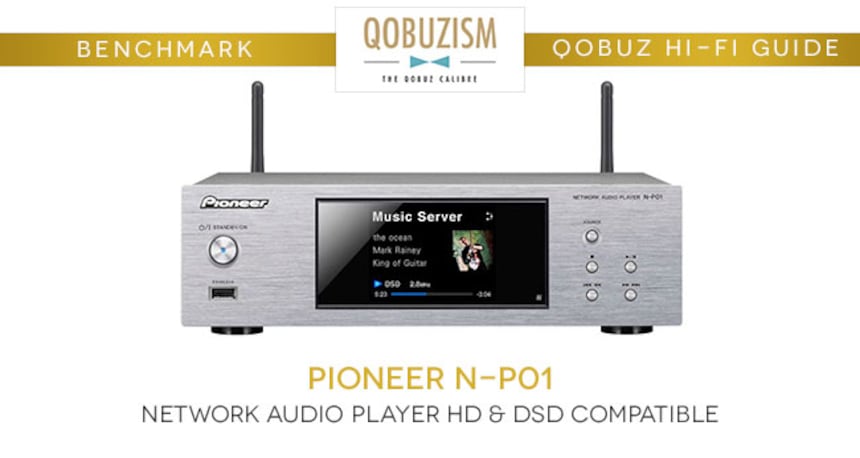
About the Pioneer N-PO1
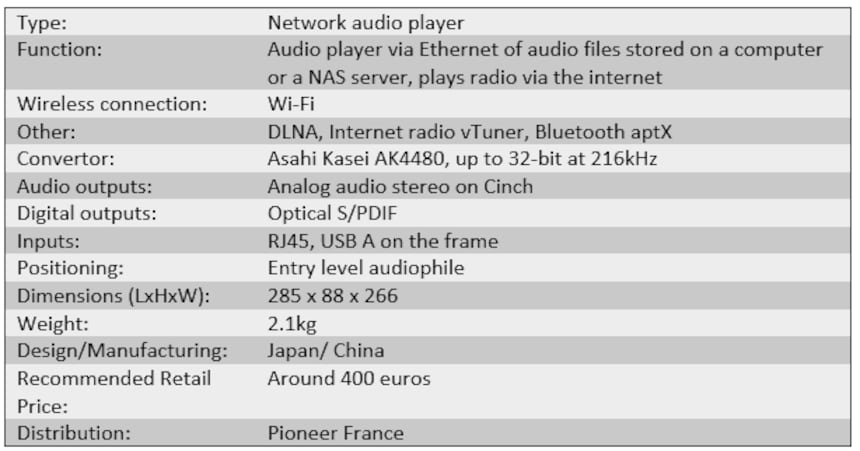
Presentation
Finished in black or silver, the Pioneer N-P01 network reader has a perfectly balanced appearance. Its frame is mainly taken up by its large display screen. There are only very few buttons on its right hand side, only displaying the power button and a USB socket for an iPod or storage device.
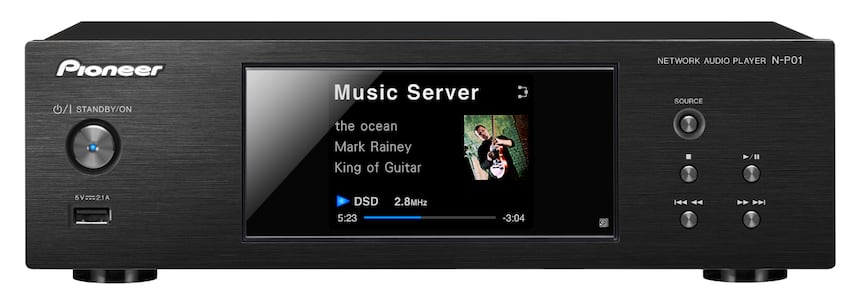
You can use these commands to choose the source, skip or go back a track, and pause or stop the music. To access the settings, you must use the remote control.
It is also possible to control the N-PO1 with the Pioneer Control App for iPhone/iPod.
Connectivity
On the back face of the N-PO1 there is a RJ45 socket for the network connection, doubled by a Wi-Fi connection, which uses two antennae to improve the reception. There is also an audio analog stereo output, one optical S/PDIF output to connect the device to an external DAC, and a trigger output (marked Control) to control another compatible device.
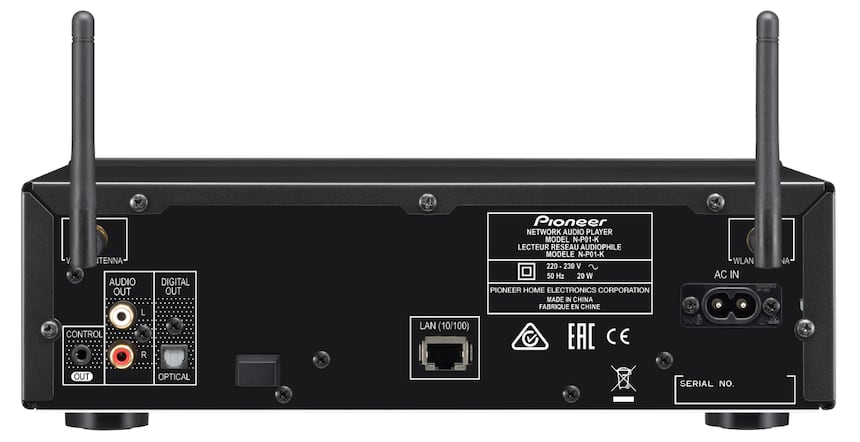
There is a little protruding piece of plastic on the right of the optical output mask. This protects the Bluetooth antenna built by an outgrowth of the device?s main circuit, which sticks out of the metal box to capture the waves.
Manufacturing
We recently took apart and examined the brand?s DAC U-05. Its silicon material gives it a substantial weight, and its electronics are particularly well furnished. In comparison, the interior of the N-PO1 appears slightly wanting?
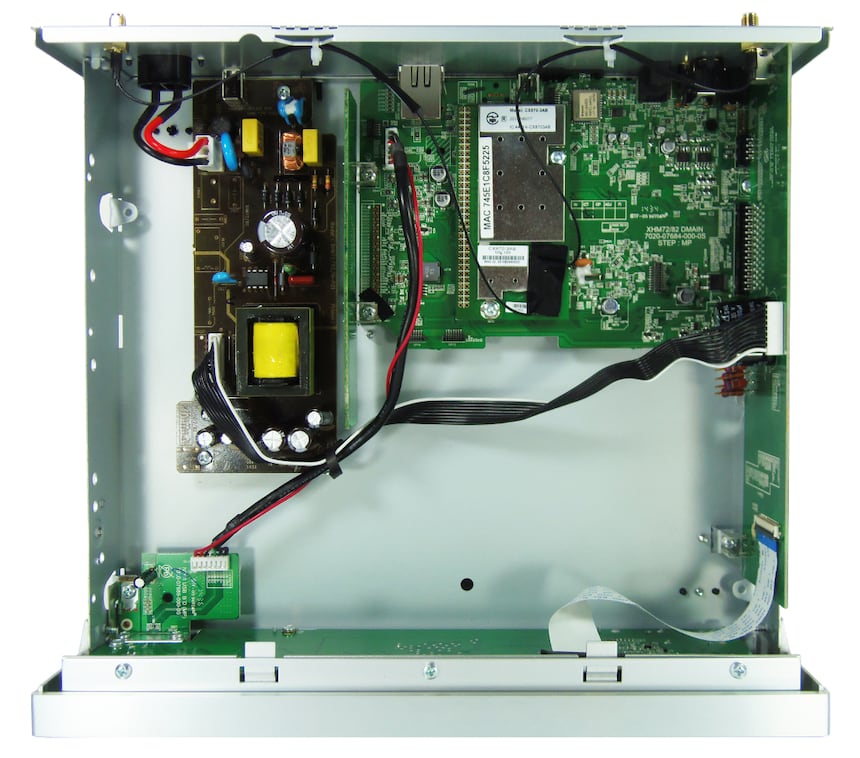
The power feed is a switched model. Pioneer inserted a printed circuit board between the power feed and the main card, which is glued to the bottom of the device. Its role is to shield any unwanted rays from the power supply.
The main card has relatively few components. Its connection to the display circuit and the commands placed on the front face is facilitated via a card, which also houses a layer of conductors coming from the power supply.
Underneath, you can see the upper face of the main card. The network card has been removed.
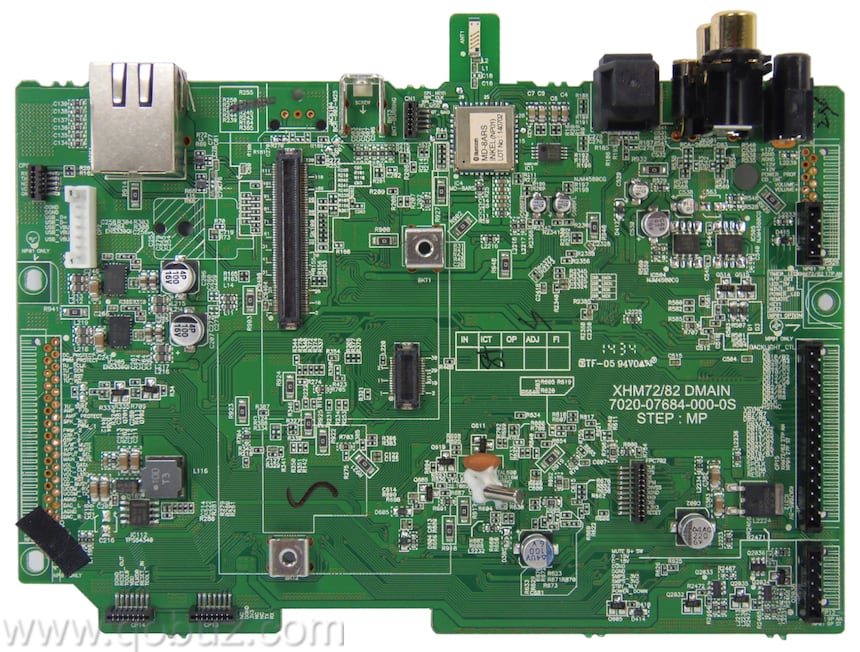
The network card, photographed on both faces, it is a CX870-3AB model by Lite-On Technology Corp.

Although the upper part of the main card has relatively few components, this isn?t the case for the lower part of the frame. This is where the digital analog convertor is hidden.
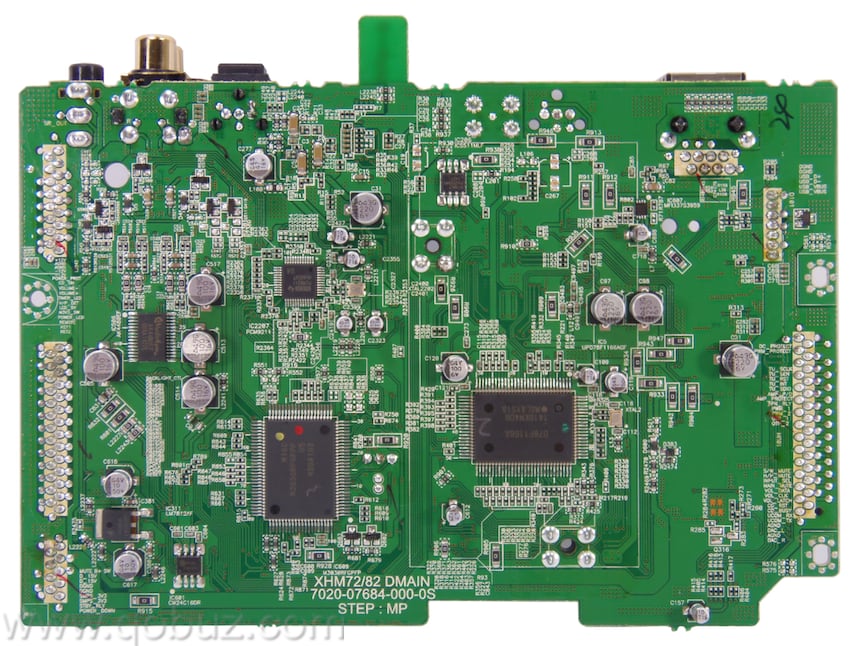
This is an AK4480EF model from the Audio4pro series from the manufacturer Asahi Kase, which accepts digital audio signals on 32-bit up to 216kHz with a sampling rate frequency.
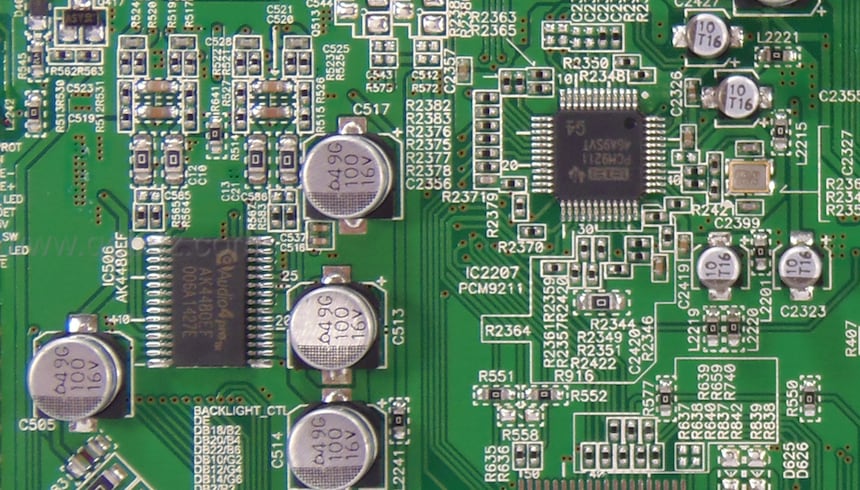
The signals coming from the differential voltage outputs are cleaned by the active filters built around the NJM4580 low noise double operational amplifiers by JCR (New Japan Radio Company).
Listening
Everyone has their particular taste regarding sound reproduction. Our regular readers know that we believe that it is best to read files in their native mode, without any form of manipulation, as it creates the best sound result. The Pioneer N-PO1 network reader seems to share the same philosophy, demonstrated when we listened to the Christmas hymn O Holy Night (midnight Christians by the French composer Adolph Adam), an extract form the beautiful album of Christmas hymns A Winter?s Light that was released with Naxos.
The sound restitution is stunning, incredibly soft and totally saturated with the intense emotional spirit of Adolph Adam?s magnificent hymn.
Similarly, when we played extracts from the Marriage of Figaro in the beautiful interpretation by Pier Giorgio Morandi leading the Hungarian State Opera Orchestra, the device created a feeling of ease, fluidity, balance and respect for the music without ignoring the smallest details or taking anything away.
To put it simply, the emotion and beauty is so powerful that you don?t want to stop listening. However we will move onto another musical genre.
When we listened to the track Ave Cesariai from Stromae?s album Racine Carrée, the Belgian singer?s voice is so clear you think he?s in the room with you. The N-PO1 also emphasizes all the subtleties of the accompaniment, and reproduces the track Moules Frites with extreme energy.
When listening to the track Get Lucky from the album Random Access Memories by Daft Punk in its Studio Master version of 24-bit at 88.2kHz, you are not only captivated by the rhythm, but impressed by the delicacy and precision of the sound restitution. The player doesn?t ignore any parts of the melody, but rather the accompaniment releases its full flavour to the listener's delight.
The dynamics and colours of the allegro from Dvorak?s Suite Américaine come to the fore with the N-PO1. We listened to the track in its Studio Masters quality at 24-bit at 192kHz, interpreted by l'Orchestre du Festival de Budapest and directed by Ivan Fisher. The clarity of the devices enables you to enjoy both the smallest details of the orchestra and the Czech composer, as well as the biggest swells of dynamic.
When playing the allegro from Mozart?s Violin Concerto in D, a file from the test DSD 2.8MHz from the site 2L.no, you are constantly aware of the Pioneer N-P01 network player?s incredible and musical audio quality. The treble soars with a remarkable ease, yet consistently remains gentle and delicate.
We noticed the same fantastic quality when listening to Bid You Goodnight by Keith Greeniger, a test file from Bluecoast records. You literally melt in the intimate and melancholy ambience of this song, which is punctuated by the delicacy of the chords and the artist?s guitar.
To conclude, the Pioneer N-P01 network player deeply impressed us with its ability to read network audio files in High Definition and DSD, whilst its sound performance remains incredibly close to the music. This is all wrapped up at a competitive price which bodes great success, earning it a Qobuzism!
N-P01 on the Pioneer France website
Reading capabilities
Pioneer N-PO1
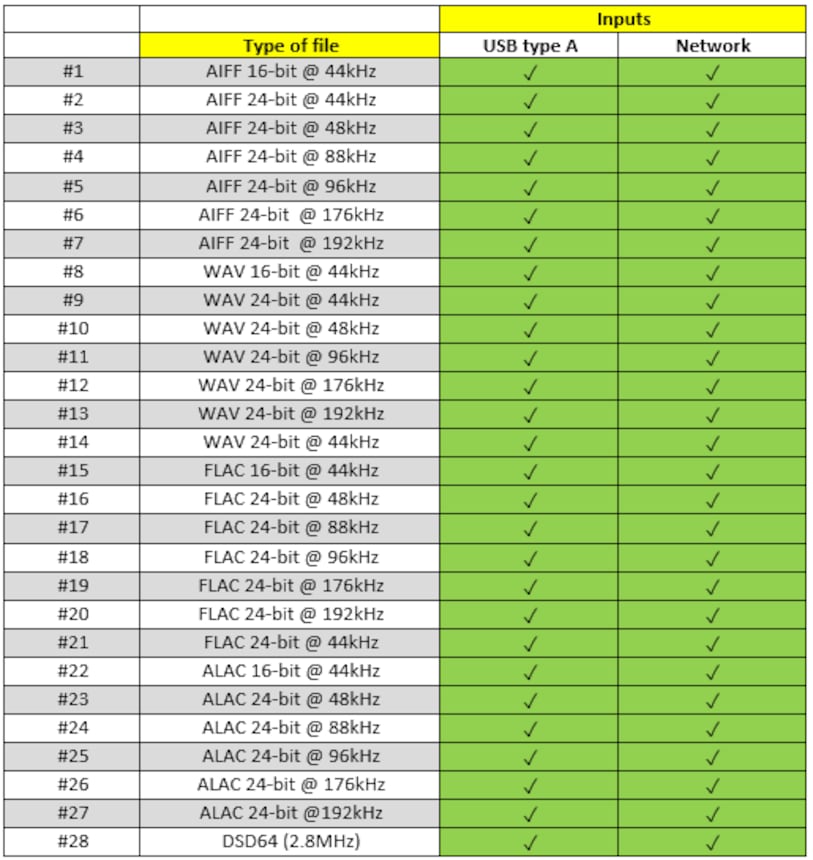
If you are a manufacturer, importer, distributor or actor in the domain of sound reproduction and you wish to contact us, please do so using the following address: newstech@qobuz.com
If you are passionate about our Hi-Fi Guide and you wish to contact us, please do so using the following address: rubriquehifi@qobuz.com

